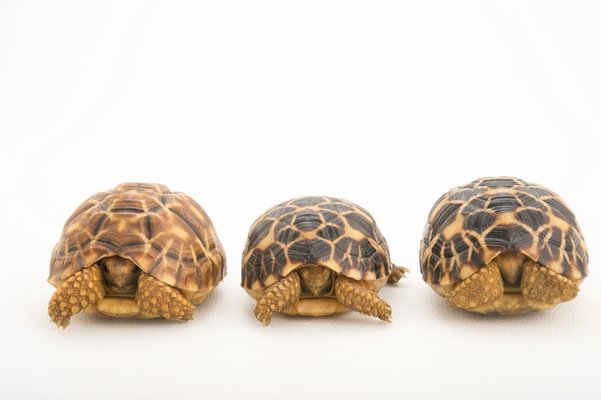
Joel Sartore has dedicated his life to documenting animals we otherwise may never be able to see—before it’s too late.
Mr. Sartore created Photo Ark, a series of photographs on a plain black or white background that showcases endangered animals in captivity around the globe, 13 years ago after taking some time off from working as a National Geographic photographer in the field to take care of his wife, Kathy, who had breast cancer.
“I was home for a year, and I’d never stopped for a year in my career before, I’d always been going to do the next story,” he said. “That year, Kathy got better, and it also gave me time to reflect on these magazine stories that I was doing that sort of came and went in a month.”
He said that he realized that he wanted to create something more permanent and focus on one specific thing that meant something to him. He said he realized that there were so many species out there that needed attention, and he created the Photo Ark to start “showing the world what we stand to lose when we’re talking about the extinction crisis.”
He shoots the animals on a black or white background for a few reasons. “Number one, it’s a great equalizer, it allows a mouse to be as big and important as an elephant. The other thing is that without distractions, we can look these animals in the eye and really see that there’s a lot of intelligence there and a basic right to exist. All these animals are worth saving,” he said. He added that it was particularly hard to shoot small animals in the wild, and that if he lights them well and shoots them up close, you get to see things that you never could otherwise.
Mr. Sartore chooses the animals he will shoot based on where in the world he is going to speak or in places where he hasn’t photographed animals before. He asks zoos, aquariums, private breeders, and wildlife rehabilitation centers if he can photograph the endangered animals they have, and he said that most of them agree. He shoots the animals for free, and of course the publicity for those places doesn’t hurt.
On when he will be done creating his ark, he said he didn’t quite know yet. “I think I’ll know when I’m just not finding new species to shoot. The world has between 12,000 and 15,000 species captive and in human care,” he said. He said he is nearly finished with America and is now onto Asia to shoot. “When I photograph what most of these places have in their collections, it’ll be about time to wrap up.”
Mr. Sartore said that adult chimpanzees are the hardest animal he’s had to shoot because they’re smart, aggressive and just plain old tough. On the flip side, he said he got to shoot a couple of baby orangutans in Indonesia last week that were just adorable.
The shoots themselves aren’t as fun as one might think, he said. “It’s work, and it’s just trying to get everything done that we can quickly to reduce stress on the animal.”
He said the planning takes infinitely longer than the actual shoot does, considering the logistics of getting to the place where he’ll shoot and setting up the space. “For the South China Tiger in China, that took me over a year to get permission just to paint one wall black in an exhibit space, and the shoot itself only took 20 minutes.”
When he isn’t photographing animals for the Photo Ark, Mr. Sartore travels the country giving lectures on his life and his project. “[It’s] a lot about how to get a job as a National Geographic photographer, the times I’ve almost been killed—people love hearing about that—and [it gives] a lot of insight of what it’s like to work for the greatest magazine in the world,” he said. “And of course, we talk about building the Photo Ark and the goals behind that.”
Mr. Sartore will speak at the Southampton Arts Center on Thursday, August 9, as part of the arts center’s International Center of Photography Talks with Executive Director Mark Lubell at 7 p.m. Tickets cost $15. For more information and to purchase tickets, visit southamptonartscenter.org.